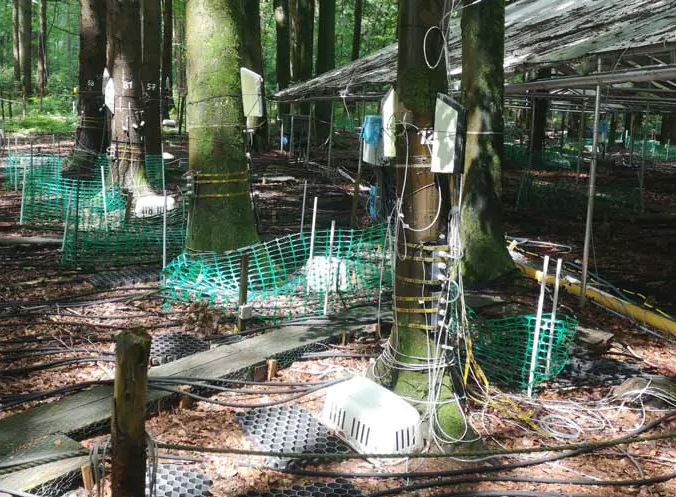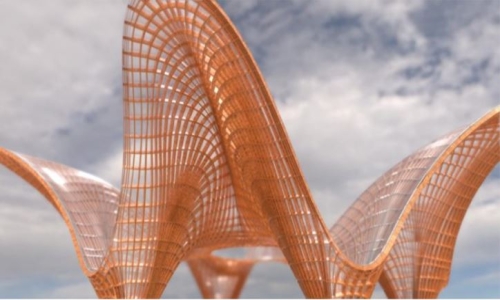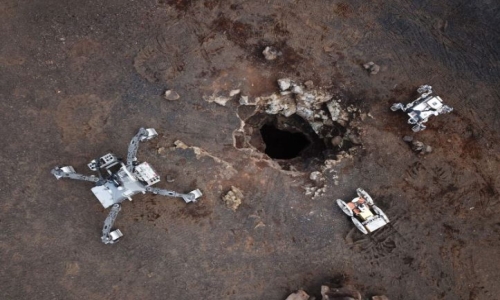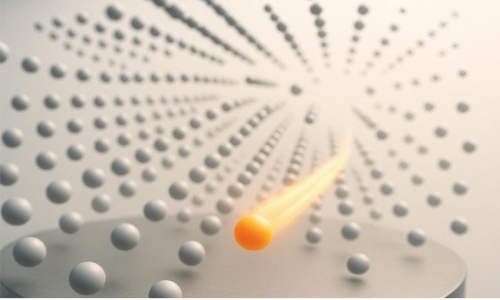


 2:53:6
2:53:6  2023-06-11
2023-06-11  871
871

The tissues of living trees could hold the key to understanding why some plants survive drought while others perish. But in old forests, it can be difficult to evaluate those tissues. Indeed, 90-year-old trees are unable to get to the lab for an imaging scan. So, the majority of research on how drought affects plants is conducted in laboratories using younger trees or by ripping cores off of mature trees. An alternative strategy was developed by ecophysiologist
Barbara Beikircher and colleagues at the University of Innsbruck in Austria: they moved the lab to the trees.
The researchers installed tough, waterproof ultrasonic sensors in mature stands of spruce and beech trees in the Kranzberg Forest, outside of Munich. To prevent summer rain from falling on some of the stands, roofs had been placed over them, resulting in the fake drought.
To learn how the mature spruce and beech trees deal with prolonged dry spells, researchers fitted the stands with ultrasonic sensors and electrical probes. College of Innsbruck
The scientists stated in the December Plant Biology that five years of observation showed that beeches (Fagus sylvatica) are more drought-resistant than spruces (Picea abies). Investigating the underlying mechanisms clarified this variation.
Compared to trees exposed to summer rainfall, trees under drought stress produced more ultrasonic signals. Deep within the trees’ vascular system, tiny air bubbles known as embolisms were reflecting those feeble acoustic vibrations. Evaporation from leaf pores causes water to go up the stem of a tree, maintaining surface tension in its hundreds of small vessels. Yet, if the earth is dry, this upward force might result in embolisms that clog the veins. Spruce pinged significantly more in the studies than beech, indicating that they had a far higher rate of embolisms.
This is true even though beeches, at least aboveground, seem to handle their water more carelessly. By sealing the pores on their leaves, trees can prevent embolisms, but there is a cost. By doing this, the carbon dioxide supply that drives photosynthesis, which creates the sugars and carbohydrates that trees need to live and grow, is cut off. According to Beikircher, trees in dry conditions must decide between “starving to death or dying of thirst.”
Although keeping their pores open longer than the conifers did, beeches experienced fewer embolisms than the spruce. According to Beikircher, it could be that beeches have stronger water stores and roots that reach deeper, moister soil. This is supported by additional studies conducted after the researchers ended the drought.
The researchers soaked the soil when the experiment was complete. By most criteria, all the plants recovered well: water-filled embolisms and rates of photosynthesis in the previously parched trees equaled those of the control groups.
Yet, the spruces’ water stores were still low when Beikircher assessed the trees’ electrical current resistance, a sign of moisture levels deep within trunks. These trees didn’t entirely recover after just one rainy season. It is unknown if or how long it will take for spruces to restock their supplies following an extended drought.
Reality Of Islam |
|

A new NURBS

A research

Researchers
 9:3:43
9:3:43
 2018-11-05
2018-11-05
10 benefits of Marriage in Islam
 7:5:22
7:5:22
 2019-04-08
2019-04-08
benefits of reciting surat yunus, hud &
 9:45:7
9:45:7
 2018-12-24
2018-12-24
advantages & disadvantages of divorce
 11:35:12
11:35:12
 2018-06-10
2018-06-10
 6:0:51
6:0:51
 2018-10-16
2018-10-16
 7:32:24
7:32:24
 2022-02-14
2022-02-14
 11:2:27
11:2:27
 2022-10-06
2022-10-06
 2:13:43
2:13:43
 2022-05-27
2022-05-27
a hero waters thirsty wild animals
 9:4:9
9:4:9
 2022-01-06
2022-01-06
 7:26:19
7:26:19
 2022-04-08
2022-04-08
 6:14:17
6:14:17
 2018-06-21
2018-06-21
 8:39:51
8:39:51
 2022-09-23
2022-09-23
 5:41:46
5:41:46
 2023-03-18
2023-03-18
| LATEST |